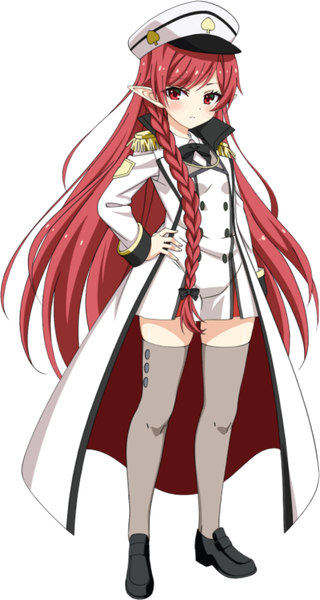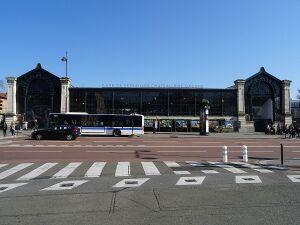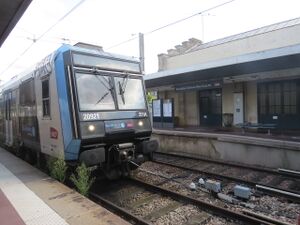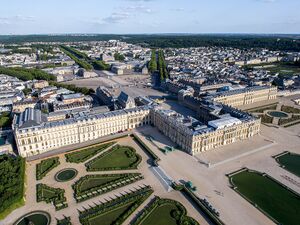Versailles
| Versailles | |||||
|---|---|---|---|---|---|
| Japanese Name | ヴェルサイユ | ||||
| Weapon | |||||
| Race | Shana | ||||
| Nationality | |||||
| Birthday | September 10 | ||||
| Constellation | Virgo | ||||
| Talents | Fencing | ||||
| Likes | Tactics and weapons of each country's military | ||||
| Dislikes | Hereditary aristocracy, Compensation that does not align with ability and accomplishments | ||||
| Strengths | Facing strong enemies head on without fear | ||||
| Weaknesses | Making trivial mistakes in the heat of the moment | ||||
| Hobbies | Studying weapons and tactics | ||||
I am Versailles, a knight of the Order of M. St. Iris. Although I am a shana from M. Verforet, our countries have decided to ally with each other, and thus I have joined the Order. In this way, I am allowed to lead a unit called the Versailles Corps.
Layers
| Icon | Title | Release Date | Where to Obtain |
|---|---|---|---|
| [The Little Swordswoman] Versailles | 2022 January 15 | [The Great War at the Fashion Store] Pick Up Gacha, Premium Gacha | |
| [Brave Sword] Versailles | 2022 January 15 | [The Great War at the Fashion Store] Event Reward | |
| [Dress Up Knight] Versailles | 2022 September 16 | 2nd Anniversary Login Bonus | |
| [The Blade That Pushes Forward] Versailles | 2022 March 16 | 1.5th Anniversary Limited Gacha 1 |
Owned Skills
Trivia
- Versailles' birthday is the opening date of Versailles Château Rive Gauche Station in 1840. However, her birthday was originally miswritten on October 9, and was eventually corrected in an official Tweet for her birthday. Source
- Versailles' dislike of aristocracy is ironic - She has all the attributes of a knight of the Order of St. Iris, a Shana, an heir-apparent, and the daughter of a Shana chief. The Palace of Versailles in real life is the symbol of the absolute monarchy of the Bourbon Kingdom of France.
- Versailles likely draws from the manga Rose of Versailles by Riyoko Ikeda, following the events leading up the French Revolution through the eyes of the noble swordswoman Oscar Francois De Jarjeyes. The manga is largely sympathetic to the revolution and condemns the nobility.
- Versailles may be a loose homage to Emperor Napoleon Bonaparte with her small stature and belief of meritocracy, though as a La Petite Épéiste instead of Le Petit Caporal.
- The building in the background of [The Blade That Pushes Forward] features the Palace of Versailles and its gardens.
Counterpart
Versailles-Château-Rive-Gauche station (formerly named Versailles-Rive-Gauche - Château de Versailles until February 2012), is a French railway station located in the commune of Versailles, in the Yvelines department in the Île-de-France region. It is one of the terminus of the RER line C. The word "Château" comes from its proximity to the castle of Versailles; the term "Rive-Gauche" is explained by the fact that it is located on a line established, from Paris, on the left bank of the Seine. This station has three platforms (two central platforms and one outer platform) for five terminal tracks (plus one service track).
Versailles-Rive-Gauche station in the Saint-Louis district is opened officially on September 10, 1840, when the line from Paris to Versailles via the left bank of the Seine was inaugurated. Its previous station was the Maine Pier, the original station of Paris-Montparnasse. The project was financed by Achille Fould. Camille Polonceau was in charge of its construction. It was rebuilt when the city hosted the government and the Chamber of Deputies, from 1871 to 1879.
In February 2012, the STIF, the SNCF and the municipality of Versailles decided to change the name of the station to facilitate the orientation of tourists. Renovation work on the glass windows (which were in poor condition) was also undertaken, at a cost of 500000 euros. It is the closest station to the Château de Versailles (about 500 m to the entrance gate of the château, via Avenue de Sceaux). In order to facilitate access to the site for its many visitors, the station's former name included the words "Château de Versailles". Its new name now includes the historical mention Rive-Gauche as a subtitle.
Versailles is an SNCF station for passengers, with ticket offices open every day. It is equipped with Transilien and mainline ticketing machines. Facilities, equipment and services are available for disabled people. There is a Relay newsagent and a croissant store, as well as hot and cold drinks and sweets dispensers, an automatic photo booth, a photocopier and a telephone booth. Wikipedia
The Palace of Versailles (Château de Versailles) is a former royal residence located in Versailles, about 12 miles (19 km) west of Paris, France. The palace is owned by the French Republic and has since 1995 been managed, under the direction of the French Ministry of Culture, by the Public Establishment of the Palace, Museum and National Estate of Versailles.
Louis XIII built a simple hunting lodge on the site of the Palace of Versailles in 1623 and replaced it with a small château in 1631–34. Louis XIV expanded the château into a palace in several phases from 1661 to 1715. It was a favorite residence for both kings, and in 1682, Louis XIV moved the seat of his court and government to Versailles, making the palace the de facto capital of France. This state of affairs was continued by Kings Louis XV and Louis XVI, who primarily made interior alterations to the palace, but in 1789 the royal family and capital of France returned to Paris. For the rest of the French Revolution, the Palace of Versailles was largely abandoned and emptied of its contents, and the population of the surrounding city plummeted. Napoleon Bonaparte, following his takeover of France, used Versailles as a summer residence from 1810 to 1814, but did not restore it. When the French Monarchy was restored, it remained in Paris and it was not until the 1830s that meaningful repairs were made to the palace. A museum of French history was installed within it, replacing the apartments of the southern wing.
The palace and park were designated a World Heritage Site by UNESCO in 1979 for its importance as the center of power, art, and science in France during the 17th and 18th centuries. The French Ministry of Culture has placed the palace, its gardens, and some of its subsidiary structures on its list of culturally significant monuments. Wikipedia
Map
Gallery
- Pages using Tabber parser tag
- Pages using DynamicPageList3 parser tag
- Weapon Sword
- Shana
- St. Iris
- Virgo
- Element Cut
- Element Light
- Element Fire
- Element Wind
- Metro Train Knights
- France
























